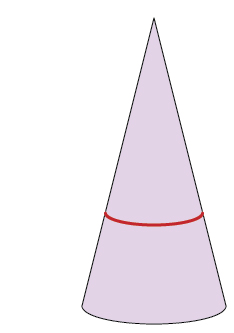Let $S$ be a smooth convex surface in $\mathbb{R}^3$ (although my question may as well be asked for the surface of a polyhedron). Say that $\gamma$ is a shortest halving curve if (a) it partitions the surface area of $S$ into two equal-area halves, and (b) it is the shortest such curve (under the Euclidean metric).

Q. Is $\gamma$ necessarily a simple (non-self-intersecting) closed geodesic on $S$?
On a polyhedral surface, the equivalent would be a simple closed quasigeodesic (in Alexandrov's sense).
Addendum. Douglas Zare's counterexample to that vain hope:

(Not metrically accurate.)
The red circle seems to be a shortest halving curve, but it is not a geodesic.


